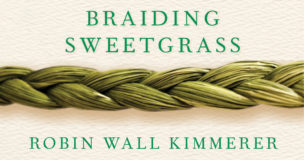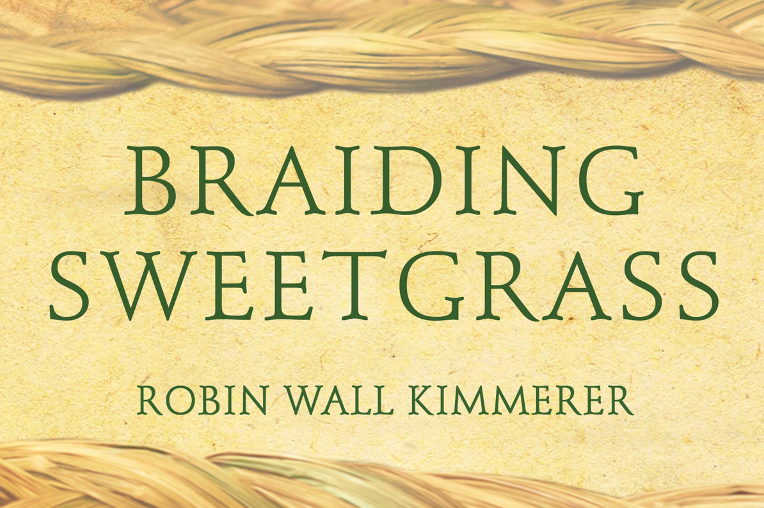 Review of Braiding Sweetgrass, by Robin Wall Kimmerer
Review of Braiding Sweetgrass, by Robin Wall Kimmerer
Years ago I read a line that caused a shock of recognition deep within me. It was something about “longing to go home, to a place you’d never been.” Often I feel that longing. Reading Braiding Sweetgrass—or other works by this author, or watching video clips she’s made—is like visiting that lost home. It’s a place where the world and everything in it, every plant and animal, is a valued friend, a family member. And so are my fellow humans. Not property, and not enemies or competitors, but fellow members of a vast, beautiful universe.
Kimmerer explains that she wanted to engage in serious science (botany) and she also wanted to stick to her native (Potawatomi) heritage, so decided that her calling was to bring the two together. How fortunate for us, that she made this correct choice!
Braiding Sweetgrass uses Heirochloe odorata, better known as sweetgrass, a plant sacred to Native Americans, as a theme to wrap the book around. I am not familiar with this plant; I don’t think it grows in West Virginia. There is a good bit of information about the harvesting, care and use of this plant, but this is not a how-to book. It’s an immersion in the native worldview. There is not much here that was really unfamiliar to me, but there is something about the extended immersion, coupled with Kimmerer’s gift for language, that does something more than inform—it changes the way the reader sees the world. For this reason, I got my local library to get a copy and I keep telling people they need to read it.
Braiding Sweetgrass is a collection of essays. Many are infused with mythology—that is, stories that are true but not literally factual, often from Kimmerer’s Potawatomi heritage. It’s a broken heritage; the Potawatomi are from the Michigan area, but were forcibly marched, three times to new places, ending up in Oklahoma, where her grandfather had a land claim. But he was sent to one of the boarding schools at the age of nine and his cultural heritage broken. Nonetheless, one of the first essays most evocatively recounts summer mornings when her father would pour a little coffee on the rocks as an offering, evoking the gift of tobacco his ancestors had made. Kimmerer sets this story, like the others, in a web of such vivid description that I think I remember watching that coffee pouring on the morning rocks…
Many of the essays focus on gratitude, an important element of indigenous cultures that is missing from the mainstream culture that has taken over the world. Without gratitude for the splendid world of which we are one small part, our culture has come to think we own the world, and that we are the only truly living things in it. That we exist to consume, to consume ever more of the world, without limit. This distorted thinking has brought us to the edge of climate and biodiversity apocalypse. Kimmerer seeks to bring us back from that edge, to show us another way of being in relation to the world—one in which humans are a valued member of the web of life. What’s missing is respect. And the understanding that we are “but one strand in the web of life” and that most everything around us is alive—that our fellow creatures are people. (I have to admit, I really don’t get the part about rivers and rocks being alive.)
Some of the essays are set in the upstate New York region where the author grew up and lives; some are set in the very different landscape of the northwest rainforest. Some focus on her experiences raising her daughters, one on an elderly woman she befriended during an interval in which she was teaching in Kentucky. The longest one is one of the best, though painful to read, an extended horror story about how Onondaga lake, the birthplace of the Iroquois confederacy, became one of the most polluted in the country.
If humanity is to deflect from the current disastrous path, we need a change of consciousness. Reading a book like Braiding Sweetgrass can illuminate the alternate path. I recommend it without reservation.





